MEASURING THE SEAT IN A WESTERN SADDLE
|
The seat in a western saddle is measured in inches such as 14", 15".15 1/2", 16".etc. The measurement is taken on the bare tree before the saddle is built (see FIGURE 1).
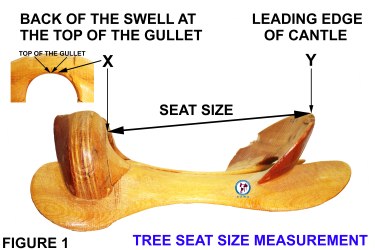 THE TREE
The western saddle tree seat size should be measured from the back of the swell at the top of the gullet (point X) back to leading edge of the cantle or cantle board (point Y). Again, as stated before, tree makers have developed their own measurements and methods and may use other reference points. These measurements are for the rider. The top of the gullet at the back of the swell is chosen for uniformity.
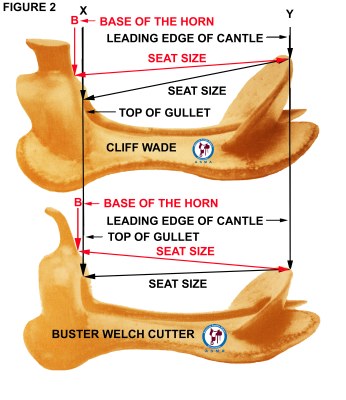 In FIGURE 2 (point X) the top of the gullet at the back of the swell and (point Y) the leading edge of the cantle is the same for the Cliff Wade tree and the Buster Welch are the same.
Another widely used reference point is the base of the horn at the back of the swell (see point B in FIGURE 2). This reference point presents a problem in that swells will have a forward "tilt" to them in other words the swell is not vertical but leans forward. This forward "tilt" varies depending upon the swell type. In FIGURE 2 the Buster Welch Cutter tree has a swell that has little "tilt" as indicated by the distance between (point B) and (point X). While the Cliff Wade tree has more "tilt" as seen by the distance between (point B) and (point X). When this reference point is used the seat size could be larger than the actual seat size and lead to confusion.
See below for an example:
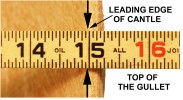 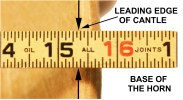 In the example the measurement taken on a bare tree from the base of the horn is just under 3/8 of inch longer than the measurement taken on a bare tree from the top of the gullet which is 15". On the sample Cliff Wade tree the difference is 1/2".
|
THE SADDLE
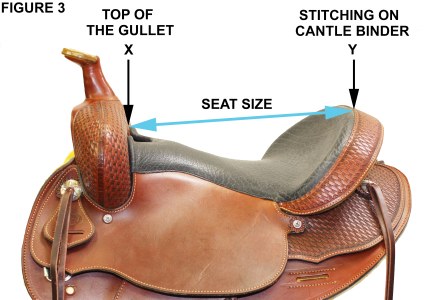 The western saddle seat size is measured (see FIGURE 3) from the back of the swell (point X) the top of the gullet back to the stitching on the cantle binder (point Y).
This measurement will be approximately the size of the tree seat size. The finished seat size will be less than the tree size. The actual difference will depend upon the materials and construction techniques used by the saddle maker. For a slick or unpadded seat the difference will somewhere between 3/8" to 1/2". A full padded seat will yield a difference from 5/8" to 7/8'.
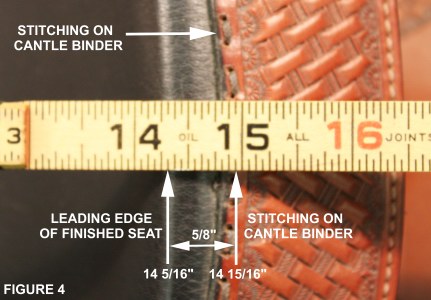 In FIGURE 4, a saddle with a tree seat size of 15" and a full padded seat has a finished seat size of 14 5/16" -- a difference of 5/8". In FIGURE 4, a saddle with a tree seat size of 15" and a full padded seat has a finished seat size of 14 5/16" -- a difference of 5/8". Also, while not factored into the seat size, the dish in the cantle will effect the fit or feel of the finished seat. The dish does not effect the seat size as far as the measurement, but a saddle with a 1 1/2" dish in the cantle will fit and feel larger than a saddle with a 1" dish in the cantle. A saddle with a
15 1/2" seat and a 1 1/2" dish in the cantle may fit and feel the same as a saddle with a 16" seat and a 1"dish in the cantle.
|
e-mail mailto:info@saddlemakers.org
Copyright 2005 - 2016 American Saddle Makers Association, Inc.
